Galeria de retlaw snellac
the world part 1
Created with Admarket's flickrSLiDR.
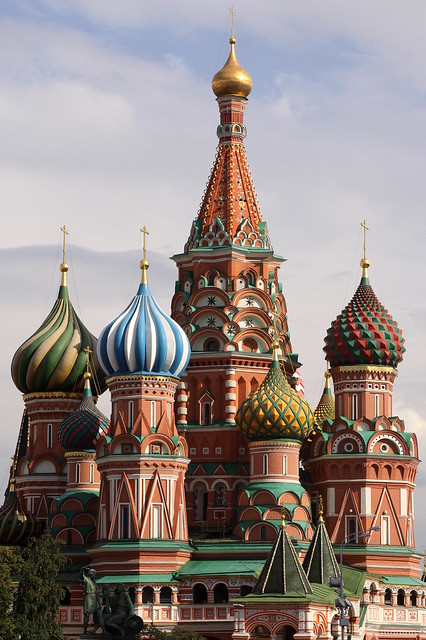
russia - moscow
St. Basil's Cathedral (Moscow, Russia).
The famous St. Basil's Cathedral was commissioned by Ivan the Terrible and built on the edge of Red Square between 1555 and 1561. Legend has it that on completion of the church the Tsar ordered the architect, Postnik Yakovlev, to be blinded to prevent him from ever creating anything to rival its beauty again. The cathedral was built to commemorate Ivan the Terrible's successful military campaign against the Tartar Mongols in 1552 in the besieged city of Kazan. Victory came on the feast day of the Intercession of the Virgin, so the Tsar chose to name his new church the Cathedral of the Intercession of the Virgin on the Moat, after the moat that ran beside the Kremlin. The church was given the nickname "St. Basil's" after the "holy fool" Basil the Blessed (1468-1552), who was hugely popular at that time with the Muscovites masses and even with Ivan the Terrible himself. St. Basil's was built on the site of the earlier Trinity Cathedral, which at one point gave its name to the neighboring square. St. Basil's is a delightful array of swirling colors and redbrick towers. Its design comprises nine individual chapels, each topped with a unique onion dome and each commemorating a victorious assault on the city of Kazan. In 1588 the ninth chapel was erected to house the tomb of the church's namesake, Basil the Blessed. The church's design is based on deep religious symbolism and was meant to be an architectural representation of the New Jerusalem - the Heavenly Kingdom described in the Book of Revelation of St. John the Divine. The eight onion dome-topped towers are positioned around a central, ninth spire, forming an eight-point star. The number eight carries great religious significance; it denotes the day of Christ's Resurrection (the eighth day by the ancient Jewish calendar) and the promised Heavenly Kingdom - the kingdom of the eighth century, which will begin after the second coming of Christ. The eight-point star itself symbolizes the Christian Church as a guiding light to mankind, showing us the way to the Heavenly Jerusalem and it represents the Virgin Mary, depicted in Orthodox iconography with a veil decorated with three eight-pointed stars. The cathedral's star-like plan carries yet more meaning - the star consisting of two superimposed squares, which represent the stability of faith, the four corners of the earth, the four Evangelists and the four equal-sided walls of the Heavenly City. The extravagant and brightly colored domes of the cathedral's exterior mask a much more modestly decorated and somewhat less spectacular interior. Small dimly lit chapels and maze-like corridors fill the inside of the church and the walls are covered with delicate floral designs in subdued pastel colors dating from the 17th century. Visitors can climb up a narrow, wooden spiral staircase, set in one of the walls and discovered only in the 1970s during restoration work, and marvel at the Chapel of the Intercession's priceless iconostasis, dating back to the 16th century. There was so little room inside the church to accommodate worshippers, that on special feast days services were held outside on Red Square where the clergy communicated their sermons to the milling masses from Lobnoye Mesto, using St. Basil's as an outdoor altar. The church has narrowly escaped destruction a number of times during the city's tumultuous history. Legend has it that Napoleon was so impressed with St. Basil's that he wanted to take it back to Paris with him, but lacking to the technology to do so, ordered instead that it be destroyed with the French retreat from the city. The French set up kegs of gunpowder and lit their fuses, but a sudden, miraculous shower helped to extinguish the fuses and prevent the explosion. Early in this century the cathedral almost fell prey to the atheist principles of the Bolshevik regime. In 1918 the communist authorities shot the church's senior priest, Ioann Vostorgov, confiscated its property, melted down its bells and closed the cathedral down. In the 1930s Lazar Kaganovich, a close colleague of Stalin and director of the Red Square reconstruction plan, suggested that St. Basil's be knocked down to create space and ease the movement of public parades and vehicle movement on the square. Thankfully Stalin rejected his proposal as he did a second plan to destroy the cathedral. This time the courage of the architect and devotee of Russian culture, P. Baranovsky, saved the church. When ordered to prepare the cathedral for destruction he refused and threatened to cut his own throat on the steps of the church, then sent a bluntly worded telegram to the leader of the party himself relating the above. For some reason Stalin cancelled the decision to knock the church down and for his efforts Baranovsky was rewarded with five years in jail. An extensive program of renovation is still being carries out on both the exterior and interior of the church, but will not spoil that essential visit to St. Basil's Cathedral, Moscow's moat famous and arguably most beautiful ecclesiastical building. In the small garden outside St. Basil's stands an impressive bronze Statue to Minin and Pozharsky, who rallied Russia's volunteer army during the Time of Troubles and drove out the invading Polish forces. They were an interesting duo - Dmitry Pozharsky was a prince, while Kuzma Minin was a butcher from Nizhny Novgorod. The statue was designed by the artist I. Martos and erected in 1818 as the city's first monumental sculpture. It originally stood in the center of Red Square in front of what is now the GUM Department Store, with Minin symbolically indicating to Pozharsky that the Poles were occupying the Kremlin and calling for its liberation. The Soviet authorities felt that the statue had become an obstacle during parades and after the construction of the Lenin Mausoleum Red Square, its position was considered rather ambiguous and was eventually moved to the garden in front of St. Basil's in 1936.
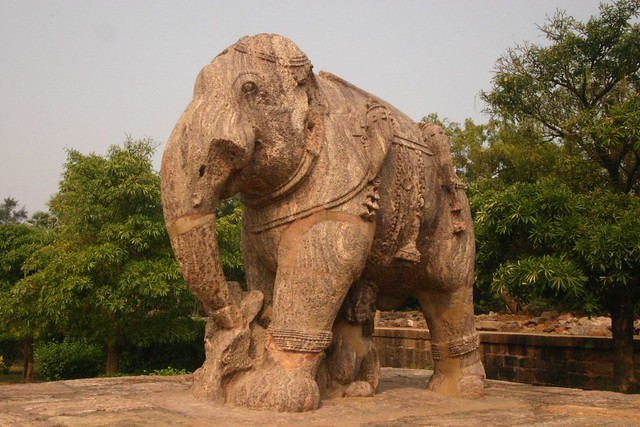
india - orissa
Konark is famous for its 13th-century Sun Temple (a World Heritage Site).
The Sun Temple of Konark often called as the Black Pagoda was constructed in mid thirteenth century by Raja Narasinghs Deva-I of the Ganga Dynasty. Conceived in form of a huge chariot drawn by seven spirited horses on twelve pairs of exquisitely decorated wheels, after the mythical seven horse chariot of Sun God, the temple was a unique in its architecture and implementation.
Intricate carvings on the walls of the main temple and the Natya Mandap (a separate structure just in front of the temple) are a sight to behold. It is often considered to be the most artistically superior among the other temples of Orissa. Sun Temple has lost its many of its original structures to time and disrepair but the remaining structures and the remainder of the structures confirm till today the infinite imaginative power of the artistes of the time and their inspiring contribution to Vaisnav Culture.
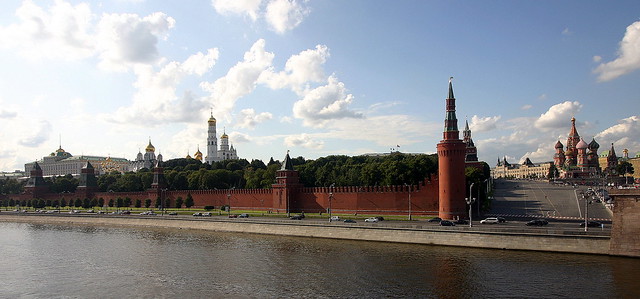
russia - moscow
The Kremlin (Moscow, Russia).
The Kremlin is the historical, spiritual and political heart of Moscow and the city's most famous landmark and tourist attraction. It's an intriguing ensemble of buildings with an architectural variety that reveals a long and fascinating history. The Kremlin stands at the confluence of the Moscow and Neglinaya Rivers on Borovitsky Hill, named after the pine forests (bor in Russian) that used to cover it. Legend has it that while hunting in the forest a group of boyars (Russian nobles) saw an enormous two-headed bird swoop down on a boar, carry it away and deposit it on the top of what was to become Borovitsky Hill. That night the boyars dreamt of a city of tents, spires and golden domes and resolved the next morning to build a settlement on the hill. History sees it a little differently and attributes the founding of the Kremlin to Prince Yury Dolgoruky, who built the first wooden fort on the hill in 1147 AD, although historians believe that the site may have been inhabited as long ago as 500 BC. The word "kremlin" means simply "fortification" or "citadel" in Russian, and is thought to derive from either the Ancient Greek words kremn or kremnos, meaning a steep hill above a ravine, or the Slavonic term kremnik, meaning thick coniferous forest, that being the likely material from which the original fort was constructed. As the fortress was enlarged and developed, the city of Moscow rapidly sprung up around it. During the 14th century, when Moscow became the center of a Grand Principality, the fortress was for the first time perceived as a separate citadel and a principle part of the city and in 1331 was given the title "Kremlin". Between 1339 and 1340 the fortress was rebuilt with new walls and towers of oak, but due to the constant threat of fire damage, in 1366 the Moscow Prince Dmitry Ivanovich (later Donskoy) ordered the construction of a large white-stone wall around the fortress to protect it.
As Moscow struggled with the Khanate of the Golden Horde, repeated attacks by the Grand Prince Olgerd of Lithuania and political rivalry with the city of Tver, building work within the Kremlin continued and by the end of the 14th century the fortress was filled with churches, monasteries and manors housing the Grand Prince's retainers and the local nobility. The 15th century saw the unification of the Russian feudal principalities under the authority of the Grand Prince Ivan III of Moscow and to celebrate he ordered the reconstruction of the Kremlin on a grand scale. Architects, builders and craftsmen were drafted in from Pskov, Novgorod and Vladimir and the Italian architects Alberti Fioravante, Marco Bono and Pietro Antonio Solari began work on the Kremlin's ramparts and cathedrals. The new Cathedral of the Assumption was the first to be reconstructed, followed by the Cathedral of the Annunciation and the Church of the Deposition of the Robe in the 1480s and finally the Cathedral of the Archangel in the early 16th century. The Bell Tower of Ivan the Great, built between 1505 and 1508, completed the Cathedral Square ensemble and new Kremlin walls and towers were constructed simultaneously from 1485 onwards.
Successive rulers left their mark on the Kremlin and its architectural ensemble grew more and more varied throughout the centuries. The 15th century saw the addition of the Faceted Palace, the oldest secular building in the Kremlin complex. The 16th century ruler Ivan the Terrible further embellished the Kremlin's cathedrals and ramparts and constructed the enormous Tsar Canon and the Old English Embassy, for the purpose of accommodating English merchants and facilitating duty-free trade. At the start of the 17th century Mikhail Romanov assumed power and rebuilt and restored much of the fortress, adding the Terem Palace and the Patriarch's Palace and in 1655 Tsar Alexei's reign saw the casting of the impressive Tsar Bell. Although Peter the Great preferred St. Petersburg as his capital, he commissioned the construction of the Kremlin Arsenal in the 1730s for the storage of weapons and military equipment. Catherine the Great added the Senate building later that century and in the 1840s Nicholas I commissioned the Russo-Byzantine-style Armory and the Great Kremlin Palace. With the Bolshevik storming of the Kremlin during the 1917 Revolution the fortress was closed to the public for the next 50 years and the only architectural additions made by the Soviet regime were the 1934 Presidium and the modernistic State Kremlin Palace (previously the Palace of Congresses) in 1961. Today approximately two-thirds of the Kremlin is off-limits to visitors, including the Arsenal, the Presidium, the Terem, Faceted and Great Kremlin Palaces and most of the buildings in the northern half of the fortress. Tourists do, however, have access to all the cathedrals, the unmissable and priceless collections of the Armory, the Patriarch's Palace and the State Kremlin Palace, which hosts regular concerts and gala performances.
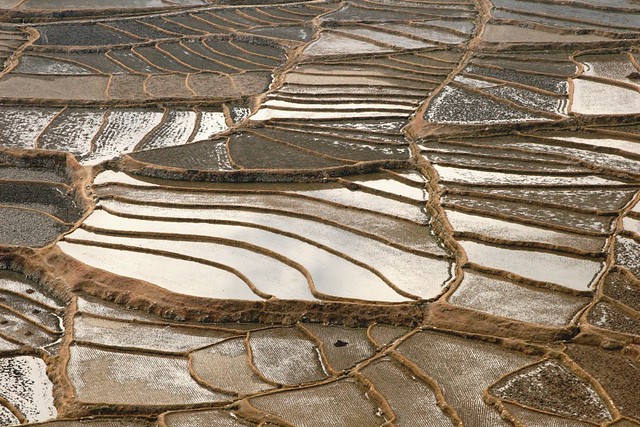
bhutan
Rice fields on the way to the Cheli La pass, claimed to be the highest motorable road in Bhutan.

india - andhra pradesh
Warangal Fort dates back to the 13th C, but invaders destroyed the majority of this massive fortress. The remnants of Warangal Fort that remain include a wall made of mud, which encircles the entire fort, a second wall of granite rock, and then the actual fort itself.
The stone gateways of Warangal Fort are still present and stand about 50 feet from the ground, carved out of a single rock. Replicas of these gates, made out of concrete, can be seen in various parts of Andhra Pradesh.
The four pathways inside the fort, pointing in the four principal directions, lead to a huge central Shiva Temple.
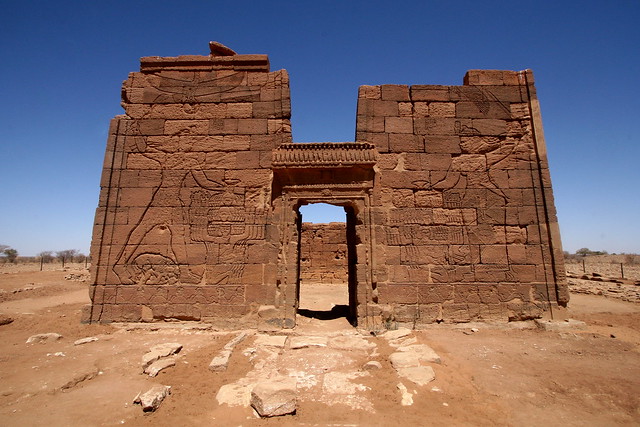
sudan - the black pharaohs
The Lion Temple at Naqa.
The well preserved Lion Temple in Sudan located at Naqa is one of the most beautiful, eccentric and unique temple I have ever seen in my travels. The distinctively brown in colour temple was built by King Natakamani. Known for his passion for arts, Natakamani left a number of buildings and temples. The front of this Lion Temple depicts the king and his wife Amanitore in separate scenes, holding their enemies by the hair while ready to deal a crushing blow. On the sides there are carvings of the royal couple in front of a group of deities, headed by Apedemak and followed by a number of Egyptian ones. One of the unique attributes of this temple is the depiction on the temple's pylon. It pictures Apedemak in rare form, still a human body with a lion head, yet his lower torso is pictured as a snake emerging from a lotus flower.
Indeed the bases for Kushite architecture style have been affected by Egyptian civilisation, but since the sunset of the 25th Dynasty and later the move from Napata to Meroe, Kushite iconography has been significantly influenced by indigenous factors. Take the example of Queen Amanitore, where her African features are very clear -- broad shoulders, round head and apparently chunky body. To the contrary of their northern neighbours, the queen in her victory relief appears to be the same size as King Natakamani, a breakaway from the Egyptian style and speculation that the king and queen might have played equal roles.
At the rear wall of the temple there is a relief of Apedemak picturing him in the centre while receiving offerings from the king and queen on either side. He appears triple headed and double armed. When you see it, the Indian goddess Shiva would probably be the first thing that comes to mind. Have the Kushites been influenced by far away India? May be, though history states that commercial ties between the two nations through the Red Sea Port of Adulis (near Massawa in Eritrea) have never been concretely confirmed.
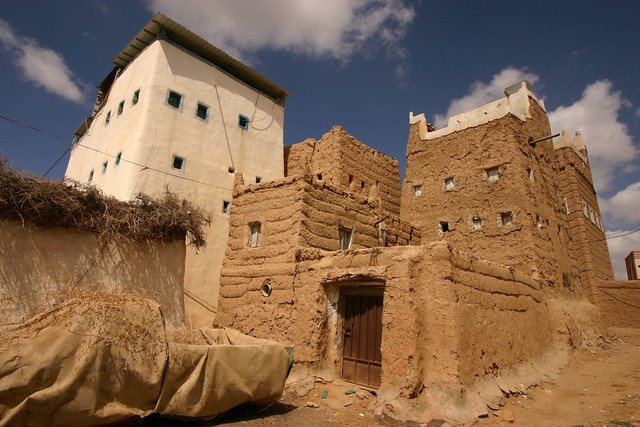
saudi arabia asir region
Asir is the jewel in Saudi Arabia's crown with stunning natural wonders and distinctive cultural heritage. This region houses an enchanting stone, slate and mud-brick architecture.
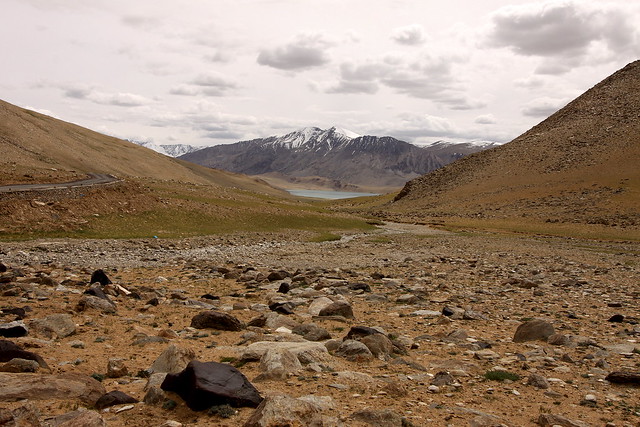
india - ladakh
The Tsomoriri Lake in the background.
Tsomomiri is the largest of the high altitude lakes to be situated entirely within India. The remote high plateau of Changthang stretches from western Tibet into eastern Ladakh. It is situated at a height of 4595 m above sea level.
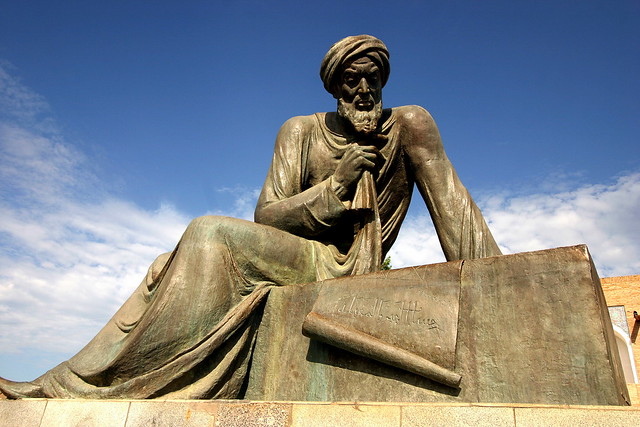
uzbekistan
The statue of Al-Khwarizmi, Founder of Algebra.
The old walled city of Khiva, in western Uzbekistan, was once the capital of the kingdom of Khorezm, near the Aral Sea. It grew rich on the Silk Road trade carried across Central Asia's deserts. Now it is a remarkable open-air museum of history and architecture.

cambodia
Terrace of the Leper King - Treasures of Angkor.
The Terrace of the Leper King is an impressively large terrace, named after the Statue of the Leper King that sits on the top. It was built, like the nearby Elephant Terrace, by Jayavarman VII and later added to by Jayavarman VIII, who extended the terrace with a new surrounding wall, the old carvings were left preserved buried in earth behind the new wall. Since then the inner wall's carvings have been excavated and you can walk through a passageway between the old and new walls to view these hidden older carvings.

berlin
The Berliner Dom.
The Berliner Dom is a baroque Cathedral built between 1894 and 1905. It is located on an island in the river Spree, also known as the Museum Island.
The first church built on the site of the current Cathedral was a 1465 church. The building, which later served as the court church for the Hohenzollern family was replaced by a cathedral, built between 1745 and 1747 in a Baroque design from Johann Boumann. It was reconstructed into a classicist building from 1816 to 1822 following a design by the Berlin architect Karl Friedrich Schinkel.
On Emperor Willem II's order, this domed building was demolished in 1894 and
replaced by the current Cathedral. Much larger than any of the previous buildings, it was a Protestant counterweight to the St. Peter's Basilica in Rome. Construction of the 114m long and 73m wide Cathedral took place between 1894 and 1905.
During the Second World War, the building was hit by a fire bomb which severely
damaged much of the Cathedral. A temporary roof was installed to protect what
remained of the interior and in 1975 reconstruct.
The restoration of the interior begun in 1984 and in 1993 the church reopened.
During reconstruction, the original design was modified into a more simplified form.
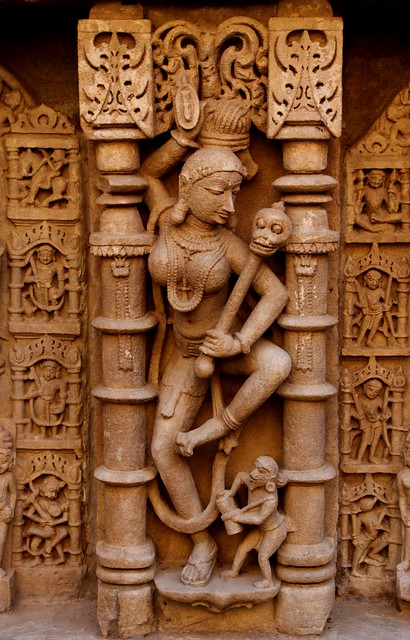
india - gujarat
Sculpture.
The Rani-ki-Vav stepwell in Patan (Gujarat).
The Rani-ki-Vav is situated about 2 km to the northwest of Patan district of Gujarat State. It is the most magnificent stepwell in Gujarat built during 11-12th century. It faces east. A stepped corridor compartmented at regular intervals with pillared multi-storeyed pavilions is a unique feature. The four pavilions which demarcate the stages along the descent have multiple storeys, two, four, six and seven respectively. Sculptures of deities and other images adorn the walls flanking the staircase. Nearly four hundred niches on the walls display images.
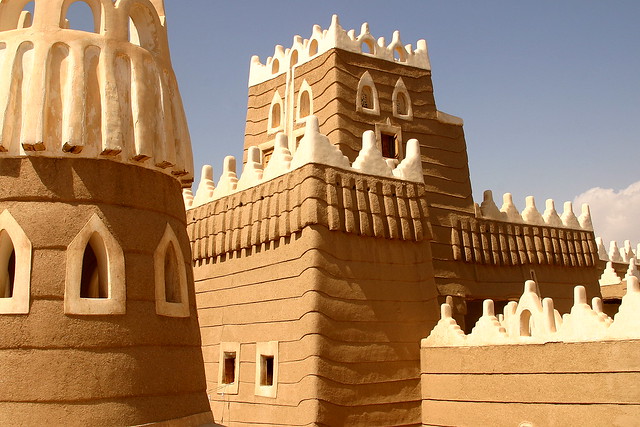
saudi arabia
Najran Fort.
Najran's most outstanding monument, Najran Fort, has all the signature characteristics of the Asir region: mud-brick fortications, fairy-tale turrets, crenellations with whitewash flourishes and small windows suggesting more than they reveal. Throughout the fort (which was also a palace), superbly carved doors and window shutters open onto whitewashed rooms with ceilings supported by palm-trunk beams.
Construction began in 1942 and the fort's 60 rooms were designed to form a self-sustaining complex - perhaps a reflection of the fact that Najran's new Saudi rulers had less than complete faith in the Imam of Yemen's renunciation of the claim to Najran. The fort fell out of everyday use in 1967, when Saudi-Yemeni relations stablised.
See also:
www.flickriver.com/photos/waltercallens/random/
www.flickr.com/photos/waltercallens/favorites/
english.cohga.net/flickr/user/74089637@N00_1.html
www.fluidr.com/photos/waltercallens/sets
www.lurvely.com/index.php?owner=74089637@N00

sudan - the black pharaohs
The Meroe Pyramids.
The Meroe Pyramids are located in the North-East of Sudan near the banks of the Nile in the area commonly known as Nubia. There are close to two hundred pyramids in a relatively small area, the ancient burial site of the Merotic Kingdom (sometimes known as the Kingdom of Kush). The Pyramids are smaller than their Egyptian cousins but equally impressive due to their number. The first of the Meroe Pyramids were built about 800 years after the last Egyptian pyramids were completed. The Meroe pyramids were constructed from large blocks of sandstone. They're angled more steeply than the Egyptian pyramids.
The Kush Kingdom flourished for 900 hundred years from around 800 B.C. to 280 A.D. and held power over a vast area covering much of the Nile Delta and as far south as Khartoum. Meroe became very important as the Kingdom's center from around 300 B.C. to 280 A.D. Egyptian influence remained strong and Egyptian artisans were used to build the Meroe Pyramids to commemorate dead royalty. The dead were buried in chambers underneath the pyramids.
Excavations of the Pyramids started in mid 19th Century. Most notoriously, an Italian explorer, Giuseppe Ferlini (1800-1870), smashed the tops off 40 pyramids in a quest to find treasure. What was found was brought back to British and German museums along with samples of Meroitic writing and reliefs depicting historical events. Through the years, the pyramids have been plundered of all their wealth and left to the elements. But many of the pyramids still stand and their architectural elegance is worth a trip. Some of the pyramids have been reconstructed so you get a good idea of what they must have looked like.
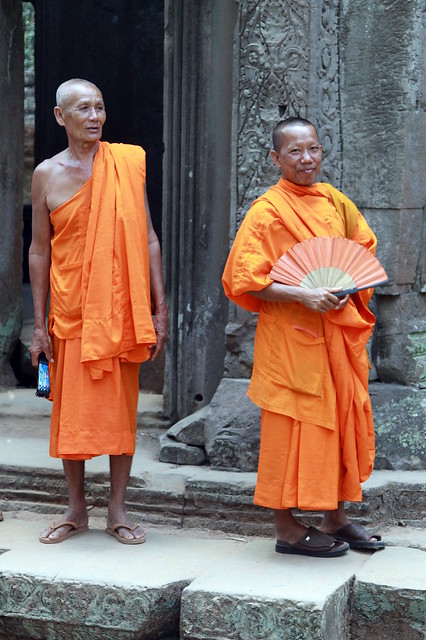
cambodia
Ta Prohm - Treasures of Angkor.
Unlike most of the temples of Angkor, Ta Prohm has been largely left to the clutches of the living jungle. With its dynamic interaction between nature and man-made art, this atmospheric temple is a favorite for many - who can't help but feel a little like Indiana Jones or Lara Croft (which was filmed here) as they pick through the rubble.
Construction on Ta Prohm began in 1186 AD. Originally known as Rajavihara (Monastery of the King), Ta Prohm was a Buddhist temple dedicated to the mother
of King Jayavarman VII.
A rare inscription at Ta Prohm provides statistics on the temple's workers. Allowing for some exaggeration to honor the king, the inscription's report of around 80,000 workers, including 2700 officials and 615 dancers, is still astounding.
Sadly, Ta Prohm was looted quite heavily in recent years due to its relative isolation, and many of its ancient stone reliquaries have been lost.
Great trees tower above Ta Prohm, their leaves filtering the sunlight, providing welcome shade and casting a greenish light over the otherwordly site. Delicately carved reliefs on the walls sprout lichen, moss and creeping plants. Some as wide as an oak tree, the vines at Ta Prohm cleave massive stones in two and spill over the top of temple ramparts. The effect is striking, especially at the strangulating root formation on the inside of the easternmost gopura (entrance pavilion). Another popular site is the "Tomb Raider tree" in the central sanctuary, where Angelina Jolie picked a jasmine flower and was sucked beneath the earth.
Ta Prohm is extensively ruined, but you can still explore numerous towers, close courtyards and narrow corridors, discovering hidden gems of stone reliefs beneath the encroaching foliage. Many of the corridors are impassible, thanks to the jumbled piles of carved stone blocks that clog their interiors. There are 39 towers at Ta Prohm, which are connected by numerous galleries.
The exterior wall of the compound is 1km by 600m (1/2 mile by 1,969 feet) and
the entrance gates have the classic Jayavarman face.
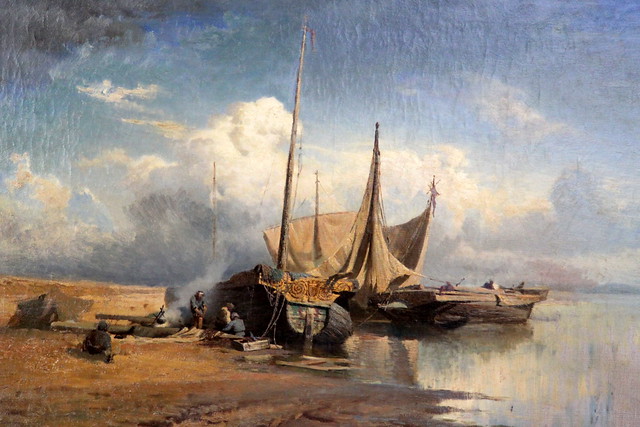
russia - st petersburg
Masterpiece of the State Russian Museum of St. Petersburg (Russia).
Rivaling the Tretyakov Gallery in Moscow as the world's finest collection of Russian art, the State Russian Museum has an illustrious history that began when the fiercely nationalist Tsar Alexander III became the first Russian ruler to make a significant collection of art by Russian artists. His son, Nicholas II, decided to open a museum in his father's honour and, in 1895, bought the Mikhailovskiy Palace to house the collection. Originally called the Alexandrovskiy Museum, it was opened to the public in 1898. After the Revolution, the museum benefited massively from state confiscations of privately owned artworks, and the permanent exhibition was slowly expanded to include the palace's Rossi and Benois Wings. The museum's collection includes over 400,000 artworks covering the complete history of Russian art, from 11th century icons to work by contemporary video artists. Unlike the Tretyakov Gallery, the Russian Museum continues to exhibit art from all periods in one space.
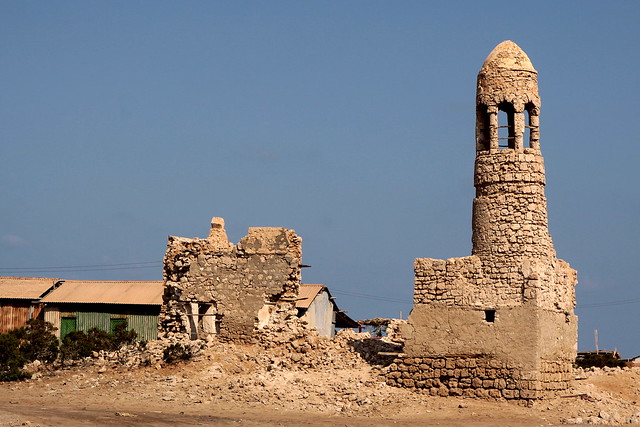
africa - somaliland
Old mosque in Zeila.
Zeila was an important town in history. But her monuments have suffered a lot during the civil war of the nineties.
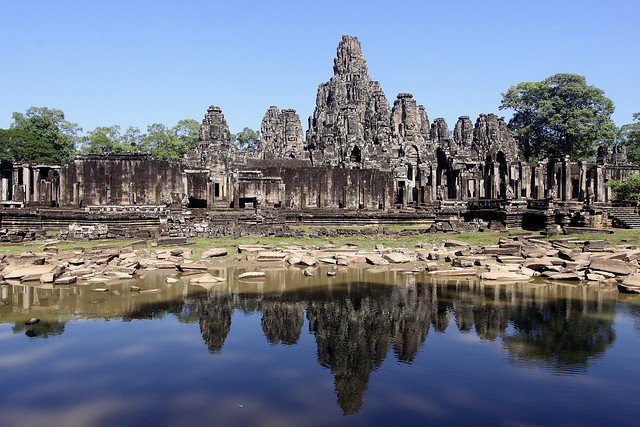
cambodia
The Bayon - Treasures of Angkor.
Face-tower.
The BAYON: A temple-mountain, a forest of 200 gigantic faces in the mysterious glances looking in all the directions, at enigmatic smiles, at beings of another world, in their smiling serenity. This 3-storeyed temple and 43 m of height , stayed for a long time an enigma. Built in 12th century by Jayavarman VII, first floors are a pantheon dedicated to the gods Khmers of the beginning of its construction, in a time of transition between the Hinduism and the Buddhism. The superior floor is dedicated to Buddha. Fabulous low reliefs of 1200m of length and representing more than 11000 sculptured persons, very long frescoes telling the fights and the naval battles between the Khmers and the Chams, as well as the daily life.
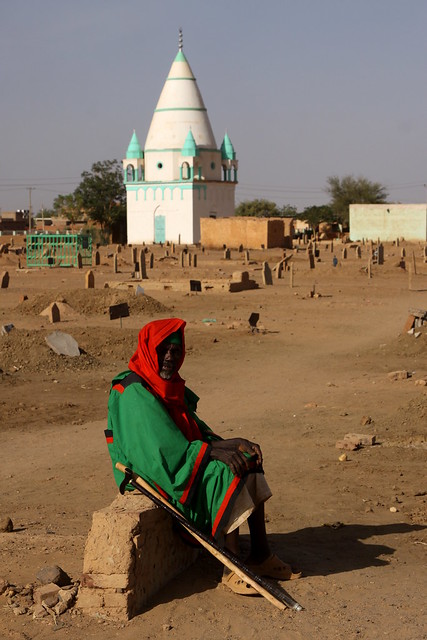
sudan - the whirling dervishes of omdurman
The whirling dervishes of Omdurman.
Sheikh Hamed al-Nil was a 19th-century Sufi leader of the Qadiriyah order, and his tomb is the weekly focus for Omdurman's most exciting sight - the dancing and chanting dervishes. Each Friday afternoon before sunset, adherents of the Qadrriyah order gather to dance and pray, attracting large crowds of observers and participants.
The purpose is a ritual called "dhikr". The "dhikr" relies on the recitation of God's names to help create a state of ecstatic abandon in which the adherent's heart can communicate directly with God. This personal communication with God is central to Sufi practices. At the end of the ritual, the dervishes break off and enter the mosque to pray in the orthodox Islamic manner. With Sufism so important to Sudanese Islam, "dhikr" rituals play a major role in religious life.
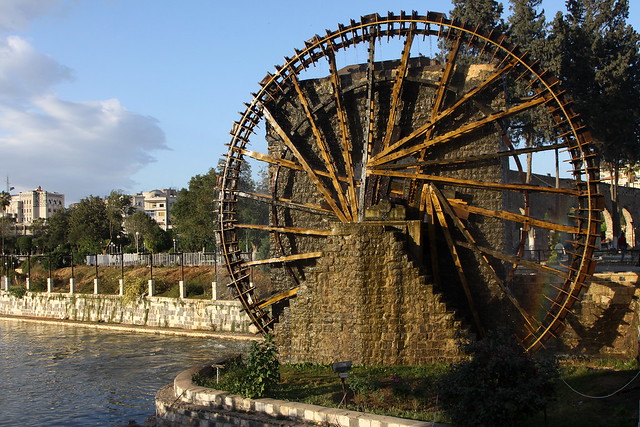
syria
The norias or waterwheels of Hama.
Hama, situated between Homs and Aleppo on banks of the Orontes river, is an important agricultural and industrial center. Except for Damascus, Hama is considered the most picturesque city in Syria and one may wish to take time to relax in its attractive gardens along river banks.
Hama has been settled since the early Iron Age. In book of Joshua, Hama is mentioned at the time when the land was divided up between the 12 tribes. It is also mentioned in Kings II as the source for the settlers the Assyrians moved into Samaria, after depopulating the cities of Holy land.
The chief attraction of Hama are the great norias (waterwheels). Originating in Byzantine times, the oldest surviving wheels date from the 13th century. The norias, which all have given names, were used to raise water from the river into aqueducts. The purpose of the wheels nowadays is purely decorative and of historical interest.
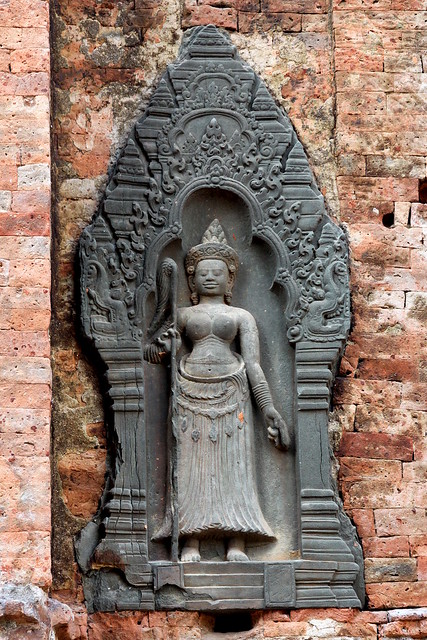
cambodia
Roluos Group - Lolei - Treasures of Angkor.
Lolei is composed of four tower sanctuaries, the remains of the original ensemble that was without doubt more complex. The King Yasovarman consecrated Lolei to the memory of his ancestors, particularly his father, in 893 AD.
Built in two tiers, the island on which the temple is found is itself located in the middle of the first great Baray of the region, the Indratataka. This large reservoir, measuring 3,800 meters by 800 meters, bears the name of its constructor, Indravarman (the father of Yasovarman) who began to build the reservoir on the fifth day following his coronation, as recorded in a Sanskrit inscription.
The inscriptions in Khmer which can still be admired on all the door jambs present an exceptional interest for two reasons. Their calligraphy is in itself a work of art, a fact noted with emphasis by the first scientific explorers of the 1860s. The inscriptions also provide us with a wealth of details concerning the moment chosen for the consecration of the temple, as well as elaborating on the delicate division of tasks carried out by the several hundred servants attached to each tower.
The name Lolei is really a phonetic corruption, commonly used in Siem Reap Province, of Harihara + alay, the name of the first 9th century Angkorian capital centered around present day Roluos. Even after constructing the island and its sanctuaries, Yasovarman still had the idea to move his capital to the region of Phnom Bakheng, about fourteen kilometers to the northwest of Lolei, site of the future city of Yasodhara.
It is not implausible that Yasovarman was building at Lolei while moving his capital at the same time. The choice to establish Lolei at the center of the Indratataka at this time
was of specific symbolic meaning and significance since it put the dedicated object (Lolei dedicated to Indravarman) at the heart of the work of the one to whom it was dedicated (the Indratataka built by Indravarman).
| The Ultimate Self Realization Course (tm) | | |
| Special New Release--Hear It Right Now!! | Special Announcements!
| See Sankarshan Prabhu's | |
| Get Krishna's Special Mercy by Rendering Devotional Service If you'd like to contribute something to help cover the expenses of Sankarshan Prabhu's European Lecture Series you can | On the order of his spiritual master, Srila Prabhupada, Sankarshan Prabhu has dedicated his life for the most urgent work of spreading Krishna consciousness all over the world. The more that Krishna consciousness spreads, the more that the suffering, scarcity, and hate on this planet will be replaced with bliss, abundance and love. This is a golden opportunity for us to do the highest good for all living beings and receive the special blessings of the Lord. Therefore we should, as much as possible, sacrifice our time, energy, and resources to assist Sankarshan Prabhu in his most important work. If you would like to help out to any extent, little or big, kindly inform Sankarshan Prabhu of your desire. | Meet If you would like to meet Sankarshan Prabhu or hear his lectures, you may contact us directly for an appointment or specific information on where and when his lectures will be held. | |
| Do You Have Questions or Need Guidance? | All inquiries are welcome. | Contact Information: Phone: 1-512-835-2121 or Email your questions |

 Sri Krishna Janmastami
Sri Krishna Janmastami Maha Kalash Abhisekha
Annual Patron Member Puja You are cordially invited to sponsor a Golden Kalash to bathe Sri Sri Radha Krishna, on the most auspicious day of
Sri Krishna Janmastami
(September 4, 2007)
This is a wonderful chance for you and your family to sponsor a beautiful bathing ceremony for Sri Sri Radha and Krishna. With your generous sponsorship, you will get to keep the sacred Kalash that the temple priest uses to bathe the Lord on your behalf. We will mail you your golden Kalash along with a wonderful assortment of prasadam sweets that will be offered to Sri Sri Radha Krishna on Janmastami. Your tax deductible contribution with help us to maintain and develop the worship of Lord Krishna.
Your golden Kalash is an amazingly beautiful transcendental work of art that your family will treasure for many generations. It will be shipped to you in a red velvet box as seen above:
There is a very limited supply. So if you would like to to sponsor a Kalash, do so right away before they are all taken: www.backtohome.com/Kalash
| ||
| Home | Thought for The Day | Audio | Videos | Photos | Itinerary | Meditations on Pure Bhakti | Offerings | Services | ||
|

Up

TABLA - FUENTES - FONTS
SOUV2
- SOUV2P.TTF - 57 KB
- SOUV2I.TTF - 59 KB
- SOUV2B.TTF - 56 KB
- SOUV2T.TTF - 56 KB
- bai_____.ttf - 46 KB
- babi____.ttf - 47 KB
- bab_____.ttf - 45 KB
- balaram_.ttf - 45 KB
- SCAGRG__.TTF - 73 KB
- SCAGI__.TTF - 71 KB
- SCAGB__.TTF - 68 KB
- inbenr11.ttf - 64 KB
- inbeno11.ttf - 12 KB
- inbeni11.ttf - 12 KB
- inbenb11.ttf - 66 KB
- indevr20.ttf - 53 KB
- Greek font: BibliaLS Normal
- Greek font: BibliaLS Bold
- Greek font: BibliaLS Bold Italic
- Greek font: BibliaLS Italic
- Hebrew font: Ezra SIL
- Hebrew font: Ezra SIL SR
Disculpen las Molestias

Up
Sankarshan Das Adhikari - ANUAL
Conceptos Hinduistas (1428)SC
Aa-Anc · Aga - Ahy · Ai - Akshay · Akshe - Amshum · Ana - Ancie · Ang - Asvayu · Ata - Az · Baa-Baz · Be-Bhak · Bhal-Bu · C · Daa-Daz · De · Dha-Dry · Du-Dy · E · F · Gaa-Gayu · Ge-Gy · Ha-He · Hi-Hy · I · J · K · Ka - Kam · Kan - Khatu · Ki - Ko · Kr - Ku · L · M · N · O · P · R · S · Saa-San · Sap-Shy · Si-Sy · Ta - Te · U · V · Ve-Vy · Y · Z
Conceptos Hinduistas (2919) SK
Aa-Ag · Ah-Am · Ana-Anc · And-Anu · Ap-Ar · As-Ax · Ay-Az · Baa-Baq · Bar-Baz · Be-Bhak · Bhal-Bhy · Bo-Bu · Bra · Brh-Bry · Bu-Bz · Caa-Caq · Car-Cay · Ce-Cha · Che-Chi · Cho-Chu · Ci-Cn · Co-Cy · Daa-Dan · Dar-Day · De · Dha- Dny · Do-Dy · Ea-Eo · Ep-Ez · Faa-Fy · Gaa-Gaq · Gar-Gaz · Ge-Gn · Go · Gra-Gy · Haa-Haq · Har-Haz · He-Hindk · Hindu-Histo · Ho-Hy · Ia-Iq · Ir- Is · It-Iy · Jaa- Jaq · Jar-Jay · Je-Jn · Jo-Jy · Kaa-Kaq · Kar-Kaz · Ke-Kh · Ko · Kr · Ku - Kz · Laa-Laq · Lar-Lay · Le-Ln · Lo-Ly · Maa-Mag · Mah · Mai-Maj · Mak-Maq · Mar-Maz · Mb-Mn · Mo-Mz · Naa-Naq · Nar-Naz · Nb-Nn · No-Nz · Oa-Oz · Paa-Paq · Par-Paz · Pe-Ph · Po-Py · Raa-Raq · Rar-Raz · Re-Rn · Ro-Ry · Saa-Sam · San-Sar · Sas-Sg · Sha-Shy · Sia-Sil · Sim-Sn · So - Sq · Sr - St · Su-Sz · Taa-Taq · Tar-Tay · Te-Tn · To-Ty · Ua-Uq · Ur-Us · Vaa-Vaq · Var-Vaz · Ve · Vi-Vn · Vo-Vy · Waa-Wi · Wo-Wy · Yaa-Yav · Ye-Yiy · Yo-Yu · Zaa-Zy







No hay comentarios:
Publicar un comentario